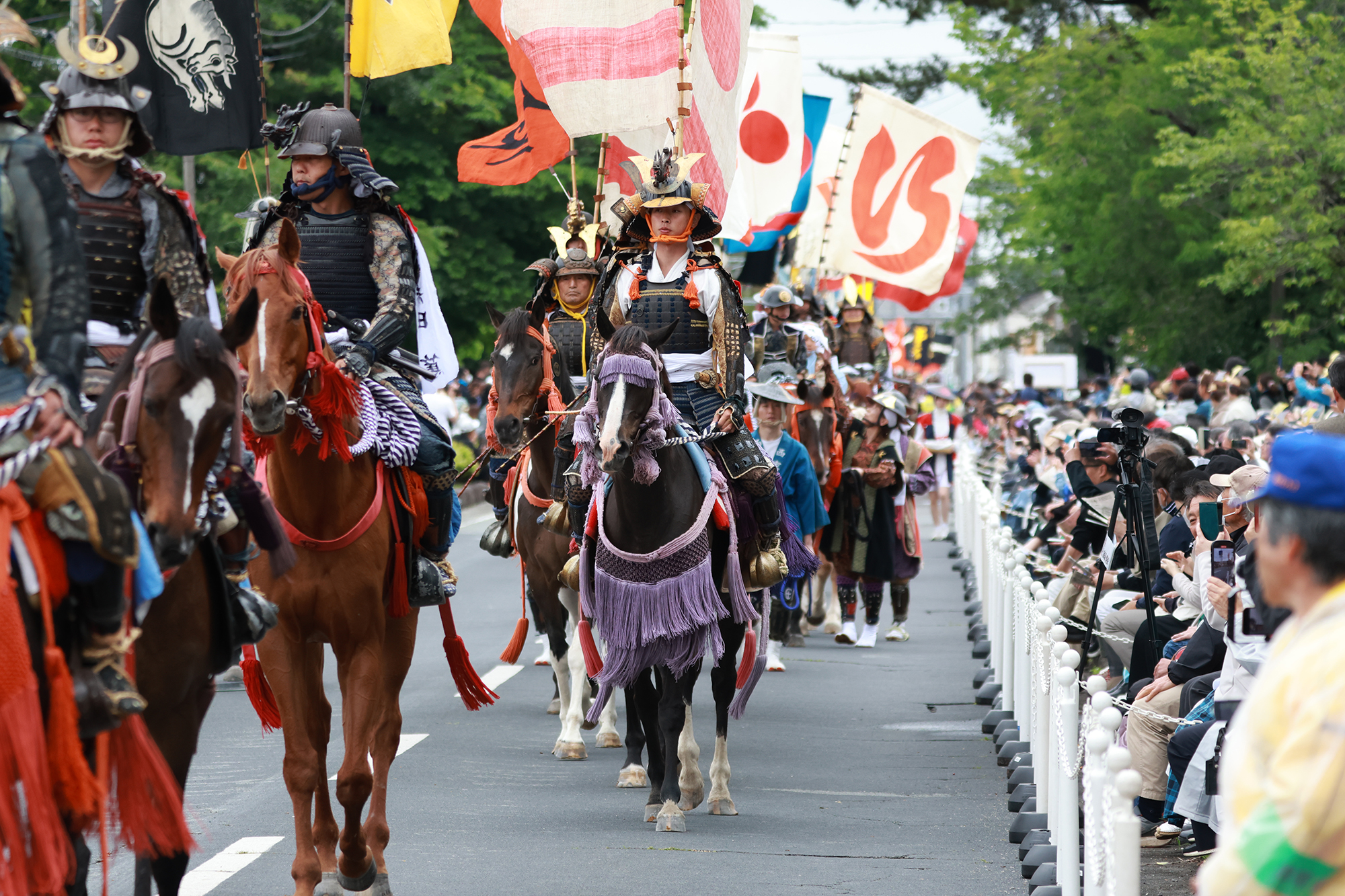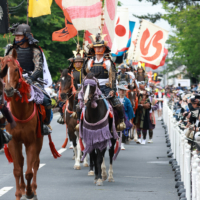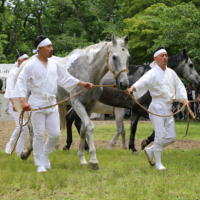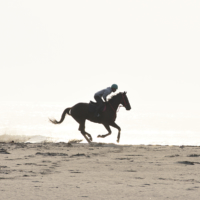In late May, the Soma and Futaba districts of Fukushima Prefecture host an exciting festival with more than 1,000 years of history. The Soma Nomaoi is a large-scale re-enactment of samurai rituals, featuring an evocative combination of beautiful horses, riders in traditional armor and Shinto ceremonies. In 1978, the festival was designated by the government as an Important Intangible Folk Cultural Property.
Staging the annual event involves close cooperation between the communities in each district and strong connections to regional identity. Soma and Futaba both faced major challenges in the aftermath of the 2011 Great East Japan Earthquake, but the organizers were determined to keep the festival going. Today, the Soma Nomaoi serves as a symbol of resilience and pride, and remains a cherished part of local culture.
Proud samurai roots
The origins of the Soma Nomaoi stretch back more than 1,000 years to the middle of the Heian Period (794 to 1185). The festival is said to have started in the 10th century with Taira no Masakado, a powerful samurai warlord who used the event as a form of military training for his cavalry.
Over the centuries, this evolved into a religious and cultural festival tied to the Soma clan, a family with historical connections to Masakado. Descendants of the Soma clan continue to play a key role in the festival to this day.
Based primarily in Minami-Soma and the surrounding areas, the festival was traditionally held in July. Today, however, it spans the Saturday, Sunday and Monday of the last week of May, with distinctive events marking each of the three days.
Rituals, parades and horsing around
Saturday marks the beginning of the Soma Nomaoi, with ceremonial events across multiple locations. Shinto rituals are observed at Soma Nakamura Shrine, Soma Ota Shrine and Soma Odaka Shrine to ensure good fortune.
Sunday’s events draw large crowds and are considered the highlight of the festival for many. Several hundred horses and riders, accompanied by scores of other participants on foot, parade along the street in traditional armor and costumes, displaying banners that have been passed down through generations of families. The procession ends at a large arena where the kacchu-keiba (armored horse race) and the dramatic *shinki-sodatsusen* (flag-catching competition) take place. Sacred flags are launched into the sky and riders clad in full armor race to capture them before they hit the ground.
Monday, the final day, features the nomakake (wild-horse capture), an ancient ritual held at Soma Odaka Shrine in which a horse is caught by hand and offered to the deity for a symbolic blessing. In the past, the horse would have been a wild one, as reflected in the name of the ceremony. Today the chosen horse is released back to its owner after the ceremony, but the ritual symbolizes the festival’s deep spiritual roots.
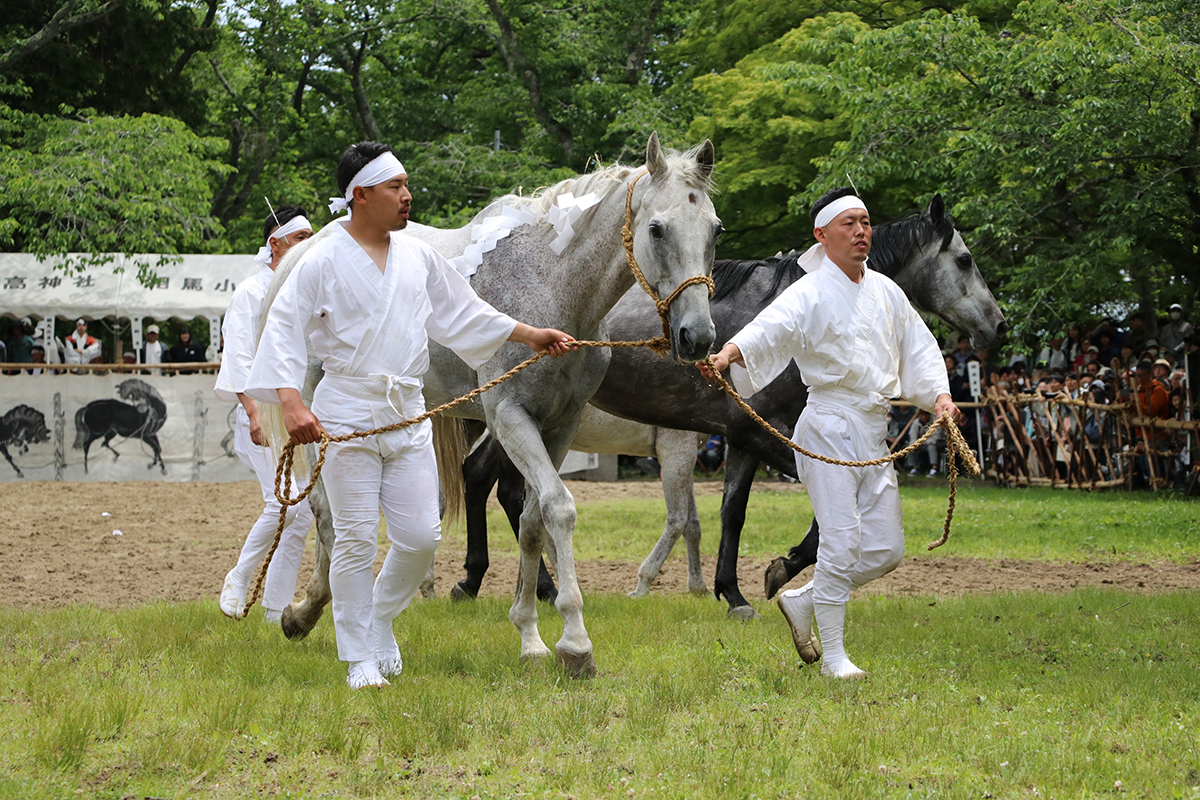
How a festival brought hope
While not a major horse-breeding area in terms of numbers, the Soma district has long been known for raising horses specifically for the Soma Nomaoi festival and is one of the few remaining places in Japan where the animals are still part of daily life. But the 2011 quake, tsunami and nuclear meltdowns at the Fukushima No. 1 power plant brought widespread disruption and multiple challenges.
The horses had to be evacuated, with many sent north to temporary homes in Hokkaido or nearby Chiba Prefecture, while residents grappled with anxiety over radiation contamination and infrastructure damage. Sadly, many lives and livelihoods were lost due to the disasters and long-term displacement following the evacuations.
Against this background, questions were raised about holding the festival, which was still taking place in July at the time. Ultimately, the decision was made to go ahead.
“After the disaster, it was felt that it was precisely in these difficult times that we should turn a crisis into an opportunity, preserving and passing on the legacy of the festival,” said Katsuhide Maeta, head of the administrative office for the Soma Nomaoi General Incorporated Association.
Although fewer riders participated and some rituals and events were omitted due to logistical challenges, the heart and spirit of Soma Nomaoi were maintained, reflecting a strong desire among residents to protect their cultural heritage. Staging the festival, even on a smaller scale, helped bring the community together, marking a tangible step in the recovery process.
Attention also turned to the horses, whose subsequent return was a source of celebration. The combined efforts of volunteers, stable operators and residents to bring them back was another example of how people united to preserve a cherished legacy.
Soma Nomaoi marches on
As the two districts gradually rebuild, the Soma Nomaoi has returned to its full scale, attracting visitors from around Fukushima and further afield. In the process, certain aspects of the festival have evolved to reflect changing demographics and societal values, while still upholding the time-honored core elements.
A major initiative was changing the festival from July to late May, starting last year. Japan’s summers have been growing hotter in recent decades, posing health risks for humans and horses alike. Switching the timing to spring has made participation safer and more comfortable for all involved.
The festival’s roots lie in military procedures, in which women did not take part, so it’s not surprising that the Soma Nomaoi was limited to men for most of its existence. Although women had been taking part in a limited capacity over the past few decades, all gender-based restrictions were lifted this year, allowing equal opportunities for everyone. About 10% of this year’s riders were female.
While the riders and horses are the undisputed stars of the festival every year, hundreds of volunteers work quietly behind the scenes, assisting with logistics, communications and promotional work, helping to ensure things run safely and smoothly. Since many of the former residents of Soma have not been able to return since 2011, the ongoing support is invaluable.
Passing on traditions to younger generations is vital for the long-term survival of the festival, Maeta said.
“It’s very important for children to know about Soma’s heritage, and how the traditional culture has been sustained through the ages,” he emphasized. “We’ve been holding meetings at local schools to share stories and knowledge about Nomaoi with children who are interested in this kind of thing.”
This year’s participants ranged in age from children as young as 4 who were led on horses during the parade to a 90-year-old equestrian, further highlighting the universal appeal of the Soma Nomaoi.
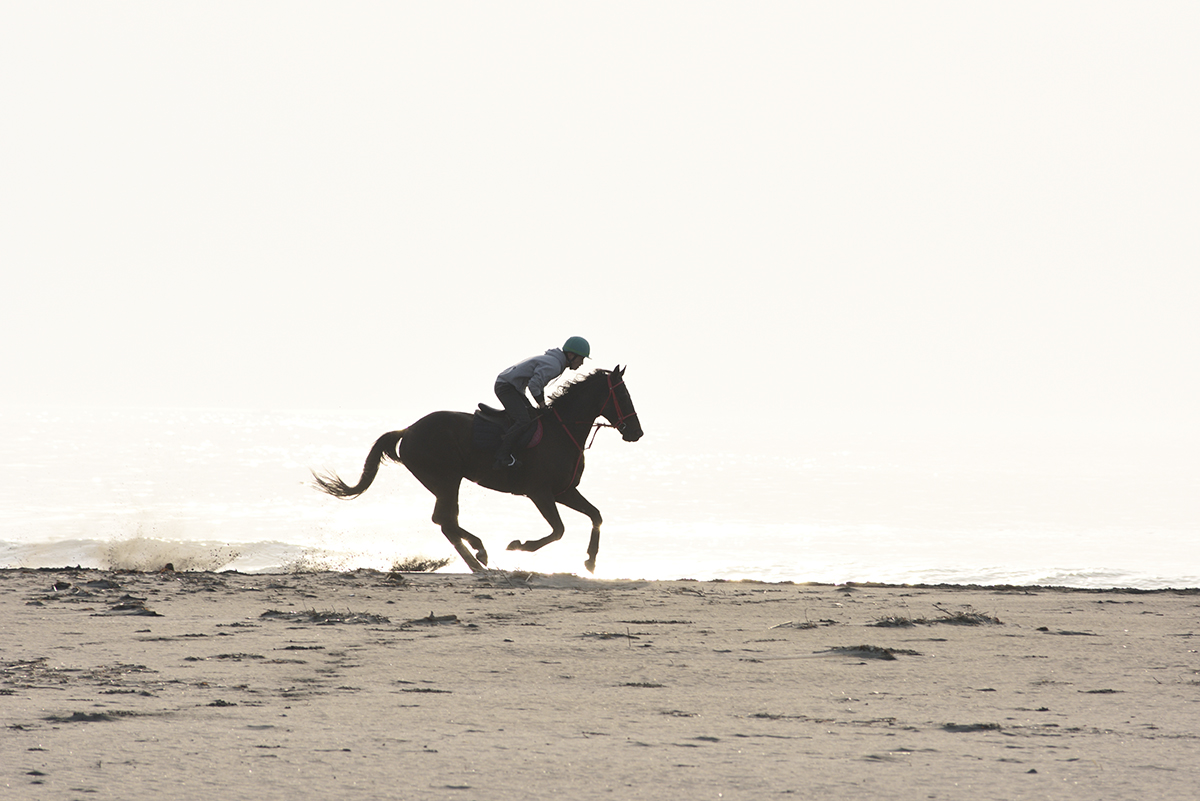
From Fukushima to the world
In the weeks leading up to the festival, local residents are up at the break of day, practicing with their horses at the main venue, Hibarigahara Field, or on the beaches, before heading off to their offices, businesses, farms and schools to continue their day. Perhaps it could be said that devotion and commitment to the Soma Nomaoi is built into their DNA.
While most Soma Nomaoi riders have roots in Soma and the surrounding areas, people from outside the district — including foreign nationals — can participate if they follow the established protocol and prepare properly. This usually means applying to join one of the local equestrian clubs via an introduction from a current member, obtaining a certificate of participation issued by one of the shrines, and then putting in the required training.
“It’s difficult to move around in the armor that is worn during the events, and those coming from outside of Soma won’t feel safe unless they practice with someone who is already skilled. It’s hard work!” Maeta said. “They also have to make arrangements for their own armor and horse.”
Riders do have the option of borrowing a steed from a riding stable, while the local equestrian clubs can lend a hand in matching riders and horses when necessary.
As visitors continue to flock to Japan, the Soma Nomaoi offers solid potential for tourism, tying in with rising interest in samurai history and regional culture. This presents both opportunities and challenges for the organizers, who see the improvement of accessibility and information exchange as key issues. Among the potential ideas for consideration by the Soma Nomaoi organizers are increasing transportation options and offering guided experiences to help international visitors better understand and appreciate the festival.
Efforts are underway to increase the festival’s visibility in Japan and abroad. To this end, the Fukushima Reconstruction Exhibition, hosted by the Reconstruction Agency and the Economy Ministry at the Osaka Expo, was valuable in introducing the Soma Nomaoi to a global audience. Fukushima Prefecture highlighted the festival as part of its cultural recovery and regional revitalization story, and it was introduced at the expo through virtual reality videos and armor displays.
The Soma Nomaoi is more than a traditional festival. It’s a cultural practice that has endured for over 1,000 years, adapted through times of war and peace, disaster and recovery. Its continued presence today speaks to the resilience of the region. Even as increasing numbers of people become aware of this exciting annual event, the festival remains rooted in community that continues to ride forward with pride.
This article was created with the assistance of the Soma Nomaoi General Incorporated Association.



